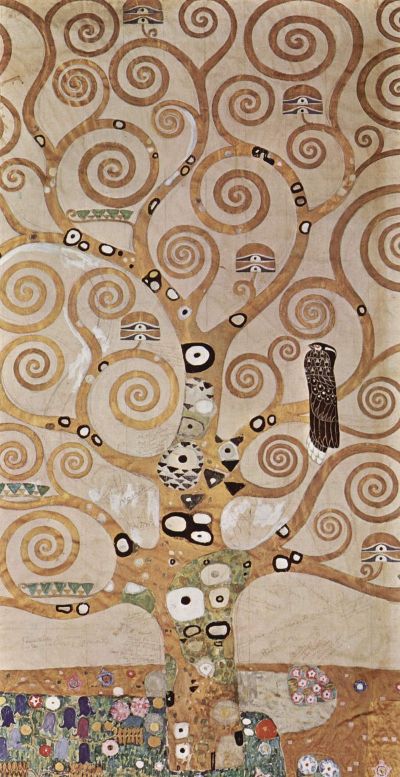Possible Classroom Concepts: Science – Trees (Purpose, Structure)
Social Studies – Countries Around the World (Canada), Language Arts – Literature, Journaling
Possible Art Concepts: Art History – Jay Dart, Dr. Seuss, Gustav Klimt
Medium (Drawing, Illustrating, Murals, Mosaics), Color (Tints), Art Careers (Fine Artists, Illustrators, Painters)
While listening to a podcast from my latest blog obsession, The Jealous Curator , I discovered Canadian self proclaimed drawist, Jay Dart. Dart has created a series of drawings about an imaginary world called Yawnder. In these drawings, a woodsman named Jiggs and his trusty dog, Floyd, venture through this fantasy world. Yawnder has many trees, but not quite the trees you’d see walking down the street. One tree might have many different pastel (tints) colored blossoms or trunks. Other trees could have a rainbow of different colored saps and their cross sectioned rings are also colorful.
In my last post, I talked about the purpose of trees. Jay Dart’s trees make a perfect addition to said post. He illustrates a logger here, a tree related job. Also, in the top drawing here, he shows Jiggs gathering colorful sap from trees. Students could guess the flavors of these colorful saps. In his Field Guide to Yawnder, Jay also shows the structure of his imaginative trees. Some of them actually grow from planting colorful beards. As a review of a tree unit, students could compare and contrast the characteristics of real trees and Yawnder trees.
His work would also be a welcome addition to a Canadian past times unit. (logging, fishing)

Gustav Klimt’s “Tree of Life”
Jay’s fanciful trees remind me of some other imaginative tree’s in literature and art. How about Dr. Seuss’ The Lorax’s colorful truffula trees. I’m also reminded of Gustav Klimt’s stylized Tree of Life. Writers like J K Rowling have made up entire imaginary worlds like Jay Dart has done. Who can forget her whomping tree. Younger students might identify with Harold and the Purple Crayon. Wouldn’t it be great fun to brainstorm with students where they might wander if given the opportunity? Students could construct their own guidebook or journal like this, this, or this. In this journal, students could draw their world and add written descriptions. What would the trees in their imaginary world look like? How are they the same and different from trees in the real world?
So, what do you think? Could you use Jay Dart’s work somewhere in your curriculum? I wish that I were still teaching. I would so love to make an imaginary world with a group of kids. I’d love to hear what you think. Simply click on the post’s title and scroll down to the comment section. If you like what you’ve seen here, please feel free to toss me a “like” or better still become a follower.
Thanks so much for reading. Hope you’ll stop by again real soon!
Your mind is so creative and I do enjoy where it takes me. Thank you, KT
LikeLike
Thanks for the compliment. I do love my art history and want to spread it around in any way I can.
LikeLike